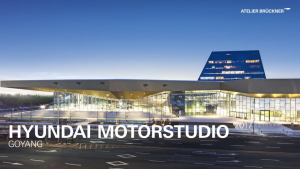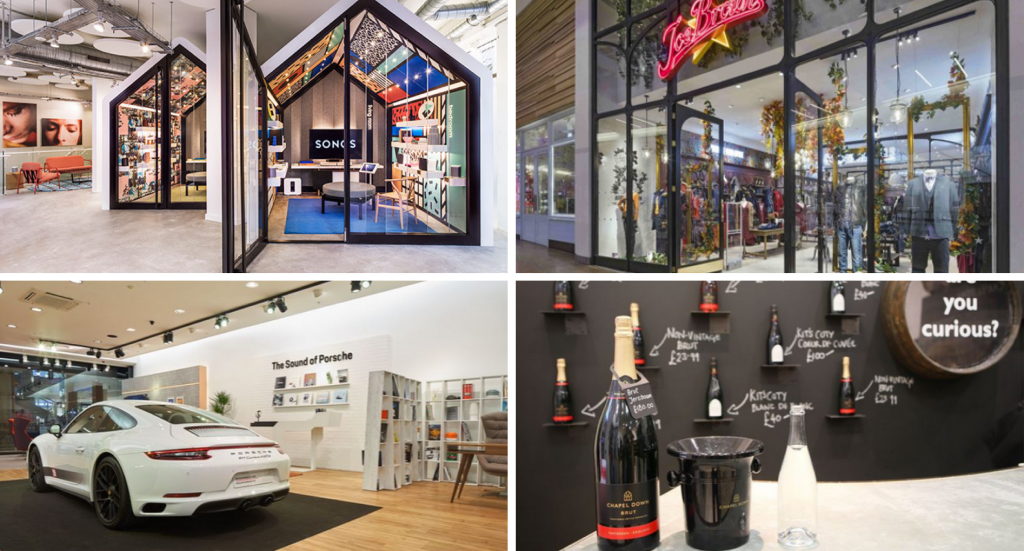 Why is it then that seemingly every week there is news about another brand that is opening a physical brand experience space for its customers when many agree with Gartner’s belief that “By 2020, customers will manage 85% of their relationship with the enterprise without interacting with a human”?
Why is it then that seemingly every week there is news about another brand that is opening a physical brand experience space for its customers when many agree with Gartner’s belief that “By 2020, customers will manage 85% of their relationship with the enterprise without interacting with a human”?
Every day we hear more about how technology is changing the world for customers and employees alike. We live in a rapidly developing world where virtual meets reality. Even brands are investing heavily in IT not only to be able to more deliver efficiently their customer experience but also to interact with customers on a more personal (data led) level.
Increasingly brands are trying to emulate the likes of Apple and Nike that engage, educate, bring communities together and showcase. These brands’ ‘stores’ are experiences, they are not there solely to ‘retail’.
Whilst consumers are open to engage with brands, its clearly becoming harder for the brands to get a share of their mind (and wallet) in this multi touch point, socially connected, brand-prolific world.
Technology enables a digital experience to customers which is arguably more personalised but it’s not a ‘real’ or physical one where brands can easily go beyond awareness building and transacting to build relationships on a more emotional basis.
Many companies appear to be taking learnings from leisure and social environments. They are creating physical real world ‘spaces’ where customers want to be, dwell, socialise, convene and even learn.
 I was lucky enough to work on the launch of a brand experience centre for Hyundai in Seoul, South Korea, which opened late last year. Their Motorstudio at Goyang is a huge space designed to ‘share’ the brand and its story with customers, rather than be a space to sell cars. You can wander around, see and experience their latest models but are not sold to or put under the pressure so synonymous with car dealerships. The space was a blank sheet and we crafted the visitor or customer experience to share the Hyundai story, history, technology and role in the community. It isn’t a museum, it’s a living breathing space where visitors (whether Hyundai customers or not) can go and spend time with friends and family, eat, drink, interact with interesting exhibits, watch live shows and events, have fun and learn a thing or two along the way. The aim is to evolve over time to bring new and interesting content so that visitors come back again and again. It has a huge car service centre, so that car owners can have their cars maintained there and then, instead of hanging around waiting for the work to be done, they can make the most of what else is on offer at the centre. With this, we designed a different type of role and a different type of service model.
I was lucky enough to work on the launch of a brand experience centre for Hyundai in Seoul, South Korea, which opened late last year. Their Motorstudio at Goyang is a huge space designed to ‘share’ the brand and its story with customers, rather than be a space to sell cars. You can wander around, see and experience their latest models but are not sold to or put under the pressure so synonymous with car dealerships. The space was a blank sheet and we crafted the visitor or customer experience to share the Hyundai story, history, technology and role in the community. It isn’t a museum, it’s a living breathing space where visitors (whether Hyundai customers or not) can go and spend time with friends and family, eat, drink, interact with interesting exhibits, watch live shows and events, have fun and learn a thing or two along the way. The aim is to evolve over time to bring new and interesting content so that visitors come back again and again. It has a huge car service centre, so that car owners can have their cars maintained there and then, instead of hanging around waiting for the work to be done, they can make the most of what else is on offer at the centre. With this, we designed a different type of role and a different type of service model.
These physical spaces appear to fall into several categories based on their main purpose or end goal.
First those aiming to add value to their existing ‘retail’ experience have done so by creating spaces where customers can relax, feel comfortable and feel good, moving away from a focus on pure transactions. Of course, customers tend to dwell longer and should by virtue also buy more product. I am thinking of UK examples such as John Lewis with their roof top restaurants and their new in-store apartment, that is tailor-made for customer sleepovers; Debenhams with their ‘Debenhams Redesigned’ strategy which includes opening new stores which include modern restaurants as well as beauty services offered in their new beauty bars (or at home) and Lush with their retro scented cinema in their Oxford Street store. All three have created ‘experiences’ within experiences.
More and more retailers are launching concept stores where they are adopting a clean slate and designing a customer experience altogether different to their ‘traditional’ environments where they can consider the detail of the customer journey and blend technology and physical spaces.
Next, those who traditionally sell or distribute their products through a third-party retailer and may not have a direct relationship with consumers for example consumer electronics and cpg companies. There are many examples here of brand experience centres popping up e.g. Nestle in Vevey, Nespresso and Hotel Chocolat cafes, Samsung in Seoul, New York (and other locations), Heineken in Amsterdam, Guinness in Dublin and many more. Some are focusing on their heritage and provenance to authentically share their brand story; others are expanding their brands into ‘experience-based’ food and drink offerings where consumers can sit down and experience their products at their leisure. These companies are shifting their brand’s customer engagement away from the fleeting online or physical shopping experience where mind-sets are less open to interacting, to ones where customers are more acceptable of engagement.
Then there are those brands who recognise that they need to change the way that they currently engage with their customers e.g. automotive. The car dealership environment is rife with historic baggage of dodgy salesman and pressured selling. Many of the automotive brands (BMW, Lexus, VW, Mercedes to name a few) have created showcase environments where they don’t directly retail but they listen, understand, educate and engage with customers.
And then the pure play online brands who want to move into the physical world but not on a permanent basis – e.g. pop up shops such as online mattress maker Casper and the newly announced opening of Amazon’s ‘Black Friday Deals Store’ in London this month, where shoppers can find major discounts on this year’s must-have toys, tech, fashion and more.
Finally, brands, usually represented in a more technical arena, who want to build reputation, authority and share their expertise –arguably best done in a real-life face to face environment (blended with technology) for example the Airbus brand experience centre for its b2b customers in Washington DC.
What’s common to them all, is that they are spaces that are immersive, interactive and authentic to the brands.

The watch out is that companies need to develop these physical touch points in conjunction not isolation of the overall end to end customer journey. The art is to blend digital and real-world together and present one consistent face of the brand.
It’s encouraging to see this movement towards experiences that are more human in this digital age, more authentic in this imitated world and more physical in this virtual world. Brands are increasingly intent on becoming destinations where customers can identify with them. Whilst customers continue to value experiences more than things the trend is set to continue. Maybe by 2020, customers will have a high volume of their interactions without a human, but the quality ones, the memorable ones, can be delivered in the physical world.
Images via Vimeo, Kentonline, Sonos, Pixabay



